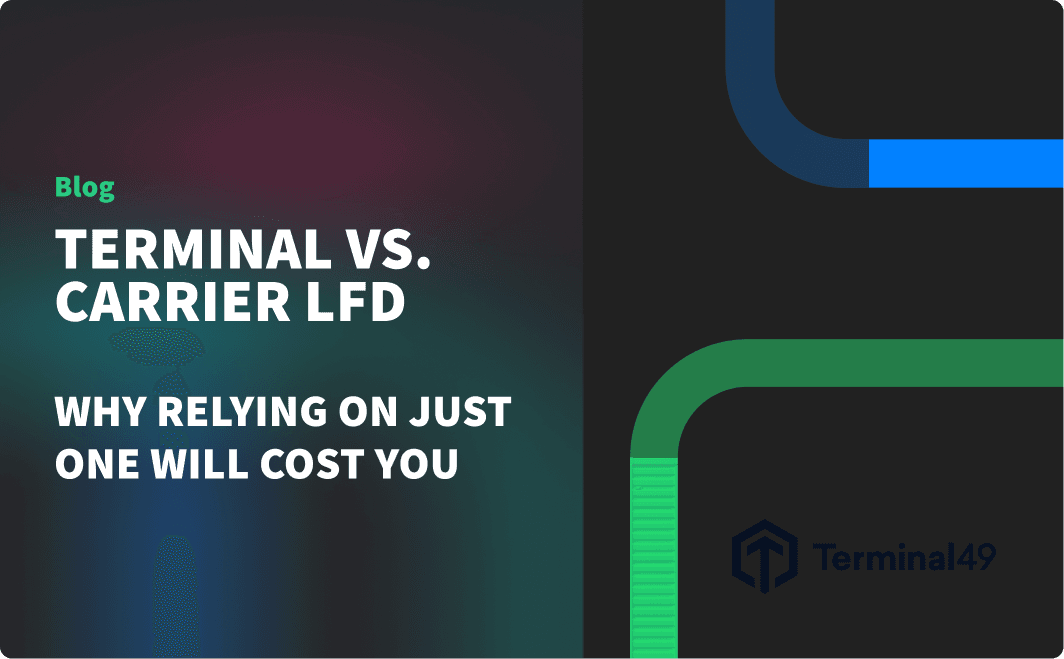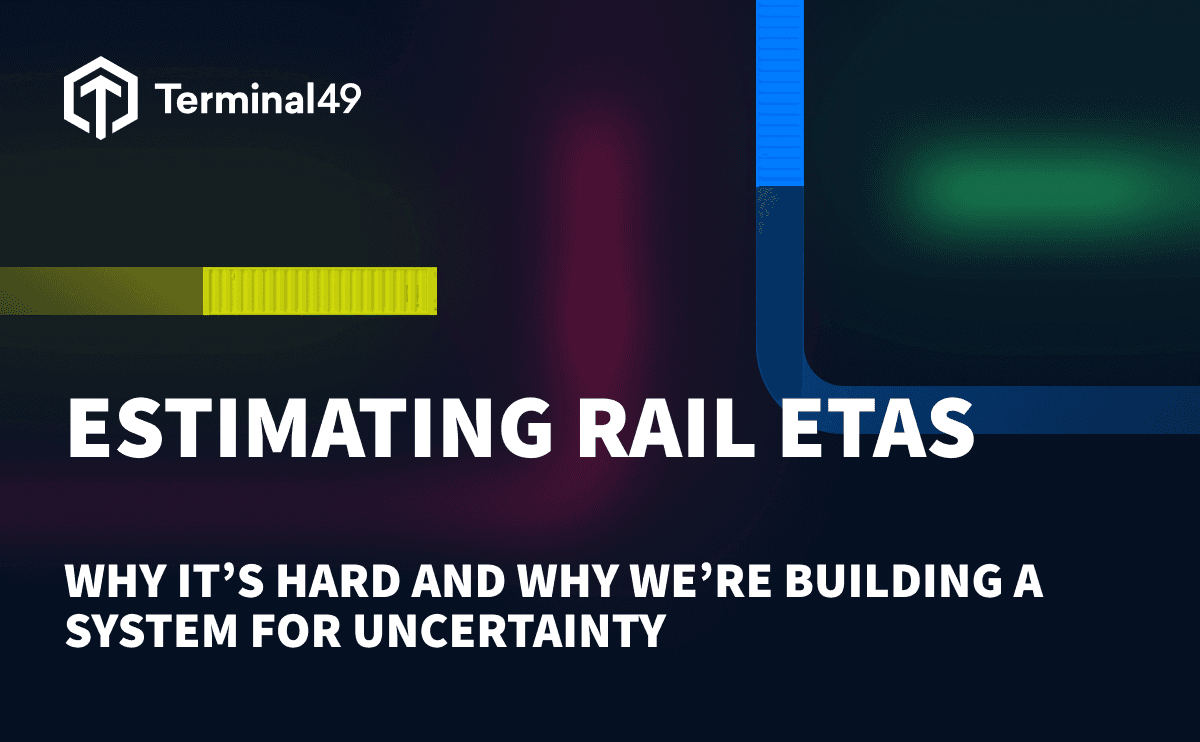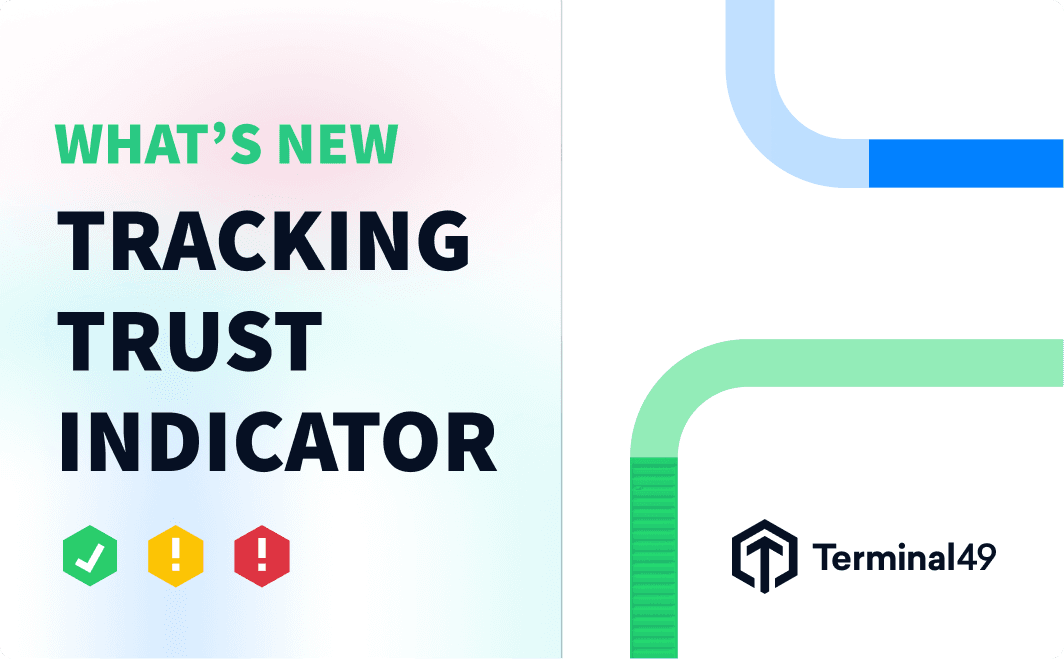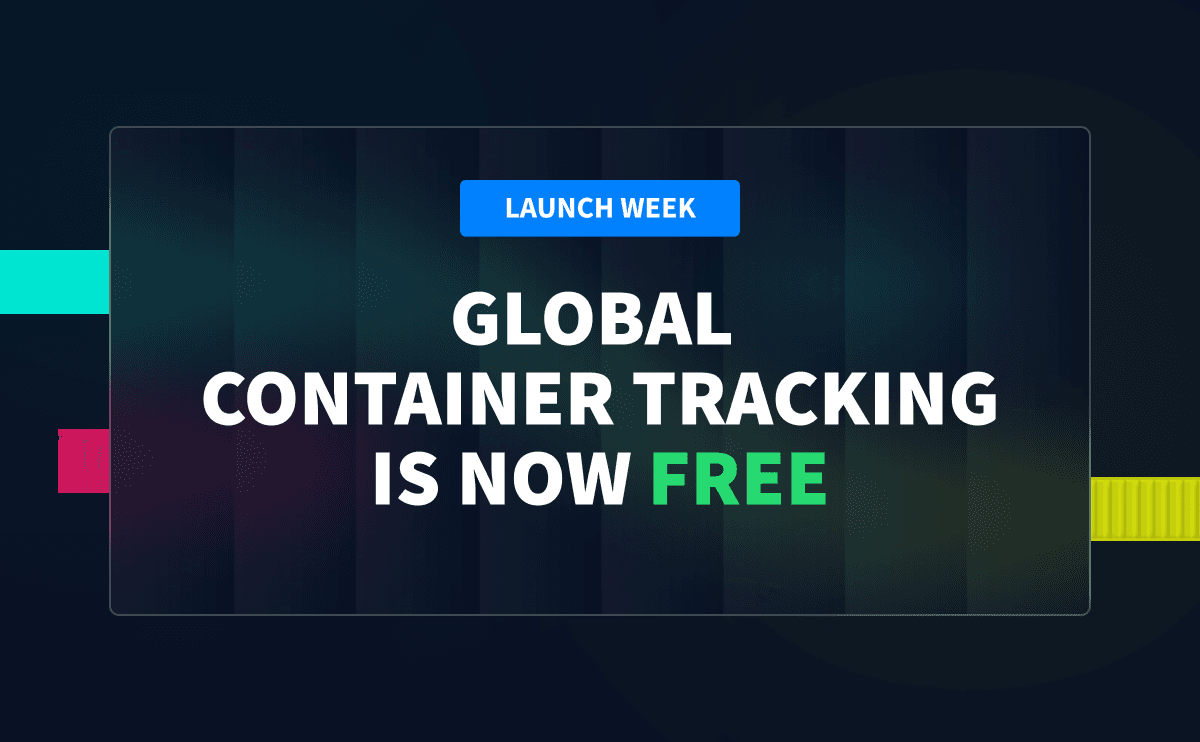When it comes to container logistics, nothing causes more headaches than the Last Free Day (LFD).
The LFD determines when free time ends and demurrage begins. Get it wrong, and you’re suddenly paying thousands in unexpected fees. Yet ask three different sources: the terminal, the carrier, or the rail operator, and you might get three different answers.
So which one is right?
The Problem with Conflicting LFDs
Most operators still rely on terminal-reported LFDs. They’re convenient, widely available, and historically treated as “good enough.”
But “good enough” is also why logistics teams are consistently blindsided:
- Terminals are not the authority → Their dates are often delayed or incomplete.
- Carriers set the rules → The shipping line decides when demurrage starts.
- Rail carriers introduce another layer → Adding complexity for inland moves.
This mismatch is more than an annoyance. Drewry research shows demurrage & detention costs have become one of the biggest pain points in containerized trade, with misaligned data being a top driver.
Why the Carrier’s LFD Matters Most
Here’s the hard truth: the carrier’s LFD is the authoritative date. It’s what’s enforced when the invoice arrives.
That doesn’t mean terminal or rail data is irrelevant; both are still valuable for context and operational planning. But if you’re forced to choose a single source of truth, the carrier’s LFD will always win.
The challenge? Until recently, it hasn’t been easily accessible in most visibility platforms.
A Better Way: Transparency Across All LFD Sources
At Terminal49, we believe you shouldn't have to choose. You need all the data, including terminal, carrier, and rail, presented clearly and side by side.
Only then can you:
- Spot discrepancies before they cost you money
- Prioritize the carrier-reported LFD to avoid demurrage
- Use terminal and rail LFDs for operational context and planning
- Automate decisions with confidence, knowing which source drives billing
We call this the Combined LFD approach: always highlight the carrier’s date as primary, but never hide the other sources that matter for real-world execution.
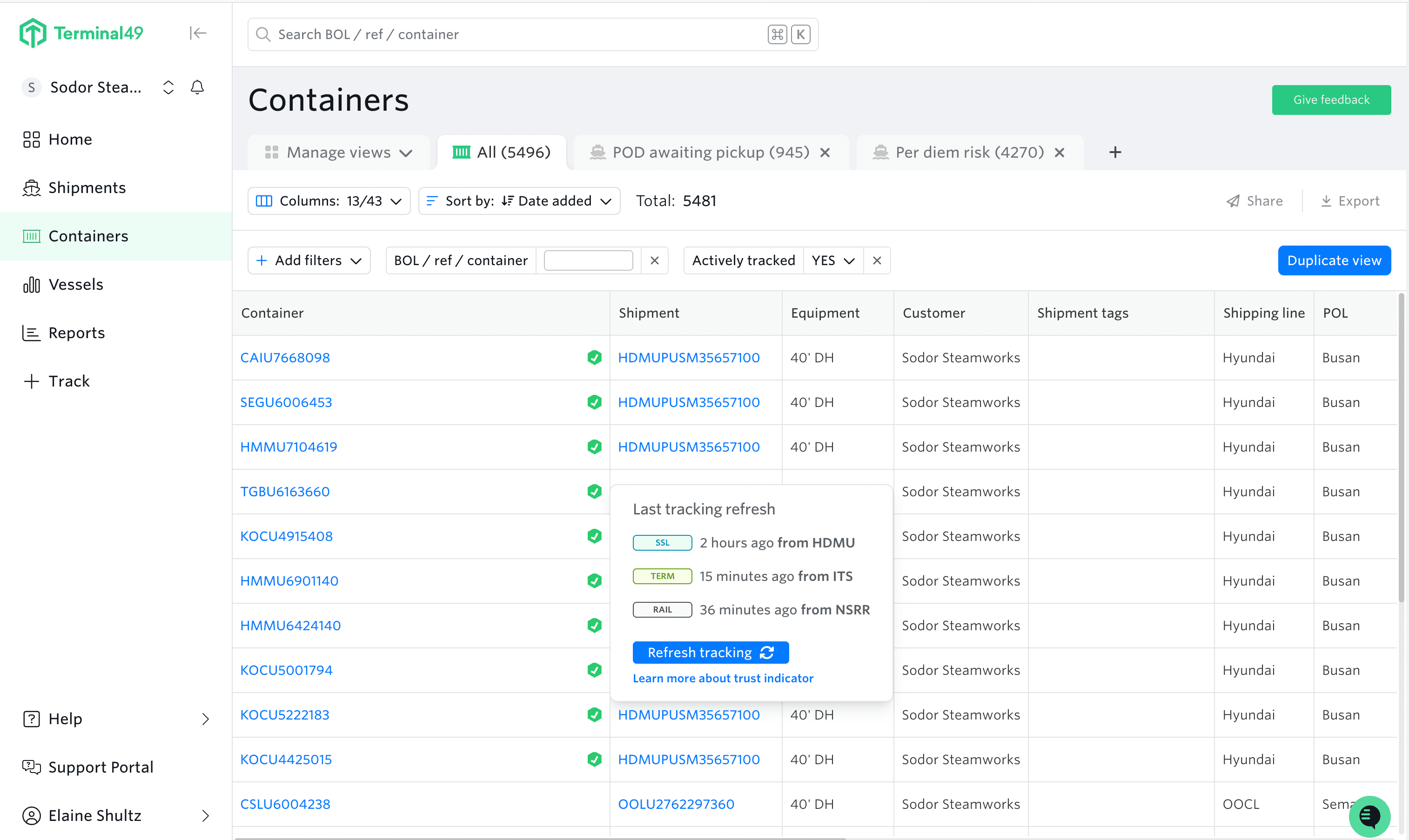
Terminal49’s Latest Update for Last Free Day (LFD) direct from the Shipping Line
With Shipping Line Last Free Day (SSL LFD) now live in Terminal49, you can:
- See S / T / R tags in shipment details and dashboards, with a Combined LFD column that prioritizes the carrier’s authoritative date
- Get notified when it changes via new webhook events like container.ssl_lfd.changed (the old LFD webhook has been deprecated)
- Access SSL LFD in your Daily Digest, DataSync, and API
- For Maersk users: enter your credentials in Data Sources to enable SSL LFD
SSL LFD is already supported for Evergreen, Yang Ming, OOCL, Hyundai, ONE, ZIM, and Maersk* — with MSC, Hapag-Lloyd, COSCO, and CMA CGM coming soon.
(*Maersk requires user authentication.)
Read the Help Article for setup guidance.
See Terminal49’s Data Coverage
To make it even easier, we’ve published our Carrier & Terminal Data Coverage Matrix. It shows exactly which carriers and terminals we support today — and where SSL LFD is already live.
Download the Coverage Matrix →
The Industry Needs More Than “One LFD”
Competitors often frame this as an either/or: track terminal OR track carrier. We believe that’s too narrow.
In today’s environment, with rising costs, stricter free time policies, and increasing inland complexity the future belongs to platforms that:
- Aggregate all sources of truth
- Expose discrepancies transparently
- Prioritize the carrier’s LFD for financial accuracy
That’s how you turn container visibility into real risk management.
The Bottom Line
Relying on terminal data alone is a gamble. The carrier’s Last Free Day is what counts for your wallet but the industry needs visibility into every perspective to make smart, timely decisions.
That’s why we’ve built Terminal49 to deliver both:
- The carrier’s LFD as your trusted primary
- Terminal and rail LFDs for context
- A Combined LFD that reflects the most accurate, authoritative data available
Because when you have all the data, you can finally make the right call — and avoid paying for someone else’s mistakes.
Further Reading:
Key Takeaways
- Prioritize the carrier’s Last Free Day to avoid costly demurrage surprises.
- Compare terminal, carrier, and rail LFDs side by side to spot discrepancies early.
- Leverage platforms that aggregate all LFD sources for transparent, risk-aware decision-making.
- Automate notifications and workflows using the authoritative carrier LFD for billing accuracy.
- Consult Terminal49’s Data Coverage Matrix to confirm which LFD sources are supported for your shipments.
